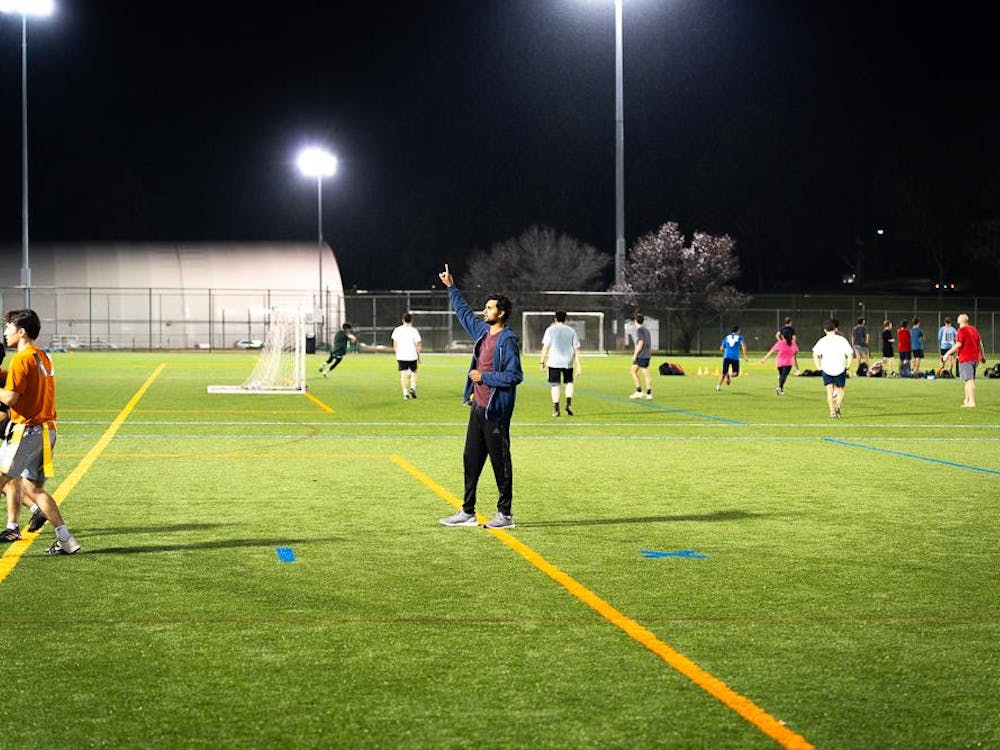The small crowd in attendance at the Kaleidoscope Room Wednesday night took a look back into a challenging part of University history through the faces and words of those who lived through integration while at the University. Through the event, “Black Power at U.Va.,” sponsored by the Black Student Alliance, five panelists, with various University affiliations, recalled living in the racial climate of the 1960s and 1970s.
The University began integrating the College in 1961, four years after panelist Paul Gaston, University history professor emeritus, joined the faculty and seven years after the two Brown v. Board of Education Supreme Court rulings demanded states integrate schools “with all deliberate speed.”
Rather than focus on Gaston’s perspective as a faculty member, the panel hoped to educate current students about “how things used to be and ... to get students to see things through a different lens, through the lens of black students here in the ‘60s and ‘70s,” BSA President Lauren McGlory said.
Four former black University students discussed their experiences as part of the University community at a time when their presence aroused controversy. Though the four panelists — Roland M. Lynch, William Cooper, Harold Watkins and Paulette Jones Morant — attended the University during roughly the same years, each had a different relationship with the University, and much of the panel was devoted to communicating those experiences.
Morant framed her perspective in terms of race and gender relations, both of which were salient during her time in Charlottesville, partly because she was a member of the University’s first class of women admitted to the College in 1970.
After her mother heard the University was accepting women, Morant said, she encouraged her daughter to apply. Morant attended Norfolk Catholic High, where Politics Prof. Larry Sabato was in her class. Despite initial reservations, Morant said she “loved” her time at the University.
While Morant was a part of the first class of women admitted to the College, she said she did not necessarily feel like a “trailblazer.” She noted that she and her female classmates were aware that other women had come before them, although they realized their situation was different.
“It was an interesting time,” Morant said.
Lynch and Watkins recalled some of the negative experiences black students faced during the tumultuous time. Lynch, a 1971 College graduate and 1975 Darden graduate, cofounded the forerunner of the BSA, Black Students for Freedom in 1969. Lynch noted black students often “did not feel welcome” in Charlottesville, and “lots of students didn’t want us here,” he said.
Despite being involved in some physical fights, Lynch said, BSF also gave black students an opportunity to rally support and to make connections, as well as a forum to express the concerns of black students and a focal point to use when communicating with the University administration.
Watkins presented an alternative path because he transferred to Michigan State University after two years at the University.
“The biggest problem I had was with the students,” he said, noting that he was not entirely comfortable walking the streets of Charlottesville. Watkins said he came to the University because he was “young and naive.” No white students attended his high school, Watkins said.
“I was not expecting exactly what I got,” he said.
Morant also addressed then-University President Edgar Shannon’s willingness to remain aware of the difficulties black students and women would face above and beyond the demands of white, male students. She said Shannon, who assumed the position in 1959, wanted to know students’ issues and concerns and members of the University community were not afraid to approach him, as reflected by the fact that people went to see him about the appropriateness of waving the confederate flag at football games and fraternities asking black students to leave parties.
“I felt he ... was listening,” Jones said, noting that “the pace of getting things done wasn’t instantaneous,” but changes were implemented.
The BSA continues the work of these alumni, contributing to the University’s collective awareness and the community’s overall well-being.
Third-year College student Desiree Smith said she attended the event because the panelists presented “a wealth of knowledge.” The alumni from the early 1970s attended the University during the transitions into coeducation and integration, Smith said, and they not only saw, but experienced a shifting landscape.
Smith said she believes that the discussion generated by such panels should extend to the entire University community, after seeing a connection between the panel and her work with University Guides. She said she would include the panelists’ information in her tours to keep spreading the knowledge.
Second-year College student Reginald Benbow, BSA leadership chair and the panel’s moderator, said it is “amazing to see the changes at the University ... [because] now race isn’t really an issue that’s prevalent every day.”
McGlory also took a hopeful yet uncertain tone concerning the current relationship between race-relations, the University and the student body.
“I think that the University has made some strides [regarding the situation for black students], but there is still a ways to go,” McGlory said. “Everyone is thinking forward and has ideas, we just need to make sure we put them into action.”






